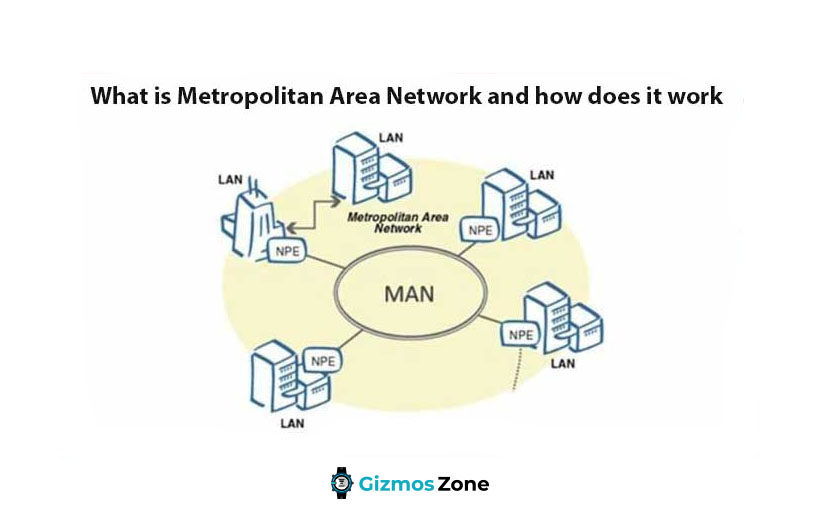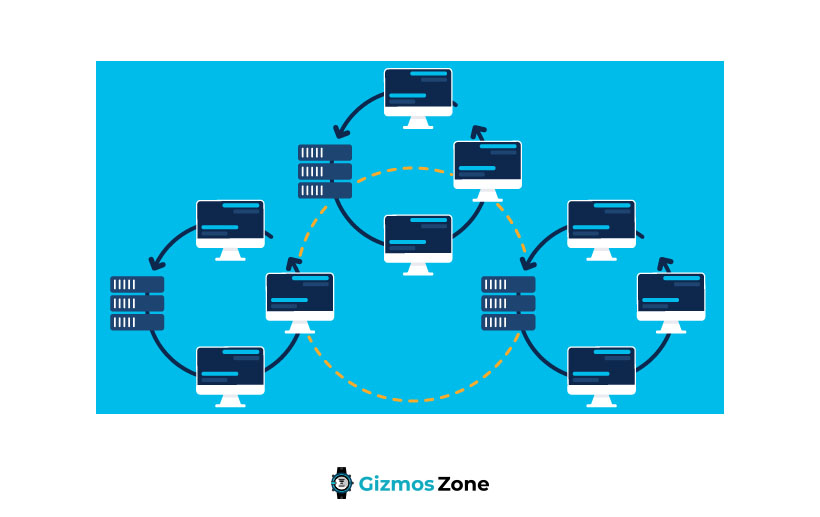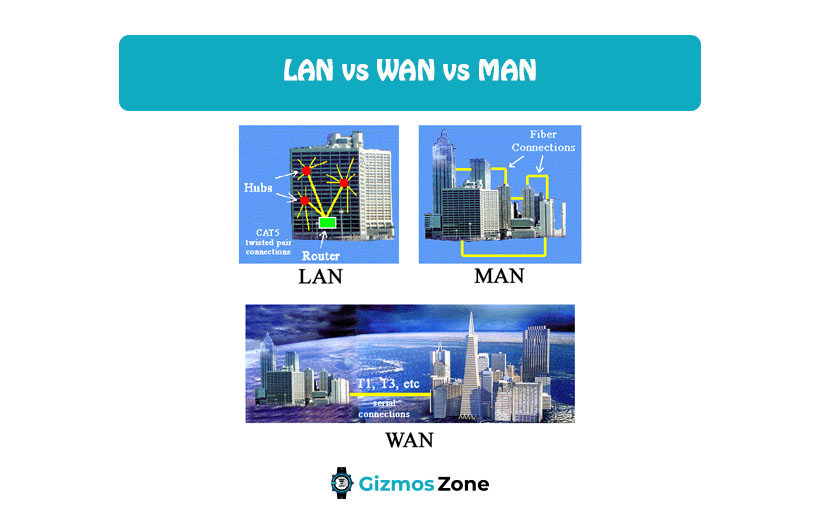The type of network that your system uses might be a LAN, WAN, or MAN. LAN stands for Local Area Network; MAN stands for Metropolitan Area Network, and WAN for Wide Area Network. As the name suggests these network categories can be distinguished based on the area that they cover under their coverage.

For instance, LAN covers a few computers within a very small geographical area. On the other hand, MAN covers larger areas like towns or cities. Lastly, WAN provides a coverage area as large as a country. There are other significant differences between these network systems. This article points out the significant features and factors that set the three types of network systems different from each other. However, let us have a detailed look into LAN, MAN, and WAN to understand better.
Local Area Network
LAN refers to the network, which essentially covers a smaller geographical area spanned within 10 meters to 1.5 kilometers. This means that LAN can join computers that are within this local area limit. Computers in academic institutions, business organizations, and other facilities are connected via LAN.

To set up a LAN connection you might require Ethernet cables and Wi-Fi. It can also be connected with the use of Token Ring and FDDI or Fiber Distributed Data Interface. The network speed of LAN can vary within a range of 4 Mbps to 16 Mbps. Let us look at some of the distinguishing features of LAN.
- While using LAN one can use the same software on different computers connected by it. Therefore, you do not have to buy software licenses for different computer systems.
- LAN facilitates quick, easy, and cost-effective communication.
- The data and information loaded into the system is stored in a centralized way in the database of the server and is available with a backup option.
- The Network security level provided by LAN is not very strong and can be hacked by malware and hackers.
- LAN requires a quality server to avoid the problem of overloading the connections.
Metropolitan Area Network
MAN refers to the network, which essentially covers a larger geographical area spanned within 5 to 60 kilometers. They are an improved version of LAN and results in data transfer at a very high speed. The high speed of transmission facilitated by a MAN is because it connects several LANs into one single network with the help of a joining point.
MAN can connect multiple LANs with the help of optical cables and twisted pair cables for enhancing the speed of data transfer. One of the most relevant examples of MAN is the Cable TV, which is located in the middle of the city and provides service all across the city through its MAN network system. Let us look at some of the distinguishing features of MAN.

- MAN results in high-speed transmission of information with the help of cables made up of fiber optic
- A good setup MAN leads the way for an effective WAN.
- It can connect several LAN networks spread over a city or a town and are cost-effective.
- MAN makes use of a dual bus, which helps in the data flow from both directions.
- The need for cables to establish the connection can be strenuous and difficult to manage.
- Moreover, the more the use of cable, the greater will be the cost of the MAN.
- Provided the large area covered by the MAN network makes it easier to hack.
Wide Area Network
WAN refers to the network, which essentially covers a humongous geographical area spanned within thousands of kilometers. This means that the area covered by a WAN network can be a country or even a continent. The WAN makes use of the LAN and MAN connections. WAN makes use of a similar structure as a LAN or a MAN. Wide Area Network is used for connecting satellites, telephone systems, or other leased lines.

The modes of transmission used by these network systems are fiber optic cables, data links, and layers of the network. Moreover, the system makes use of a dynamic range of devices for data transmission like bridges, firewall modems, and routers. One of the most relevant examples of WAN is the internet. Let us look at some of the distinguishing features of WAN.
- The WAN covers a very large area including continents, which makes it ideal for business ventures as communication through such large distances can happen over a network.
- The network system enables high-speed transmission even if it is transferring large-sized files.
- The data used by the users connected on the WAN use the same version of the information.
- One of the major areas of concern with the WAN is it’s setting up. Moreover, the setting up process might be expensive, complicated, and might take time.
- The network requires constant monitoring and supervision for its maintenance.
Difference between LAN, MAN, and WAN
As mentioned in this article, the difference between the LAN, WAN, and MAN can be based upon the geographical distance it covers. Moreover, the LAN is connected with the help of Wi-Fi, Ethernet Cables, FDDI, and TCP. On the other hand, MAN is connected with the fiber optic cables and WAN is connected with routers, modems, and satellites. The speed of transferring data in the case of a LAN is 4 to 16Mbps, MAN covers the speed of 100 Mbps and WAN has a slower speed of transfer of about 10 Mbps.
Conclusion
These are the different features of a network system using a LAN, MAN, or a WAN. The highest speed offered by the network among the three is MAN. However, they are not used typically, as they involve clearing a large number of security issues. Moreover, the cost incurred for establishing a MAN network on your own can be extremely high. One of the safest options to connect a small number of computers located in the same area is a LAN. Moreover, a LAN connection does not require the internet to be connected to other systems. The systems are connected with an Ethernet cable.
Contents
